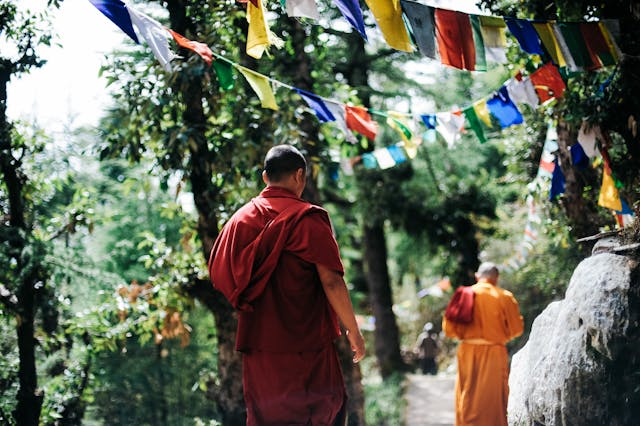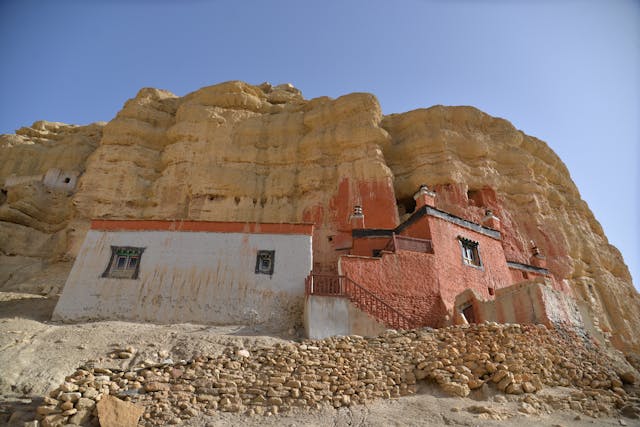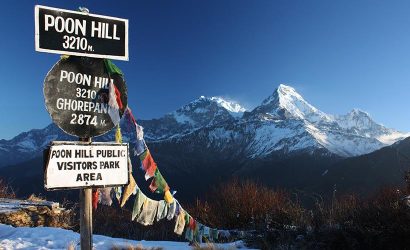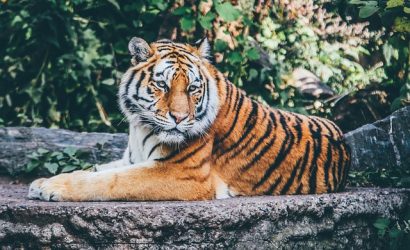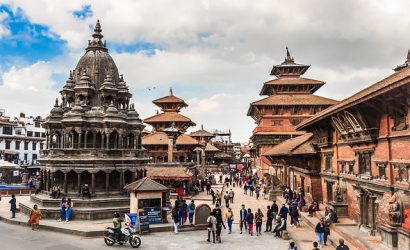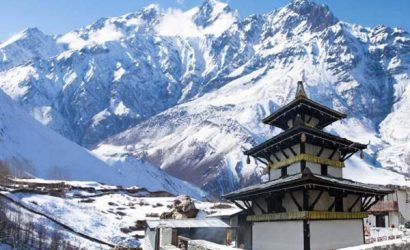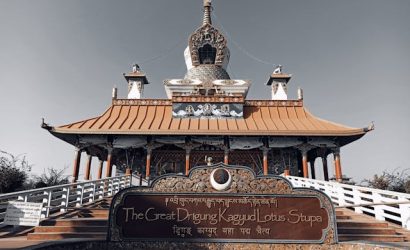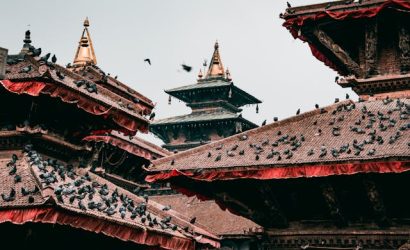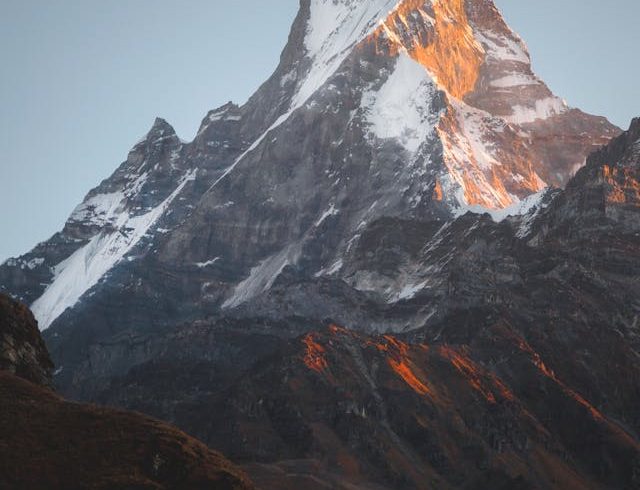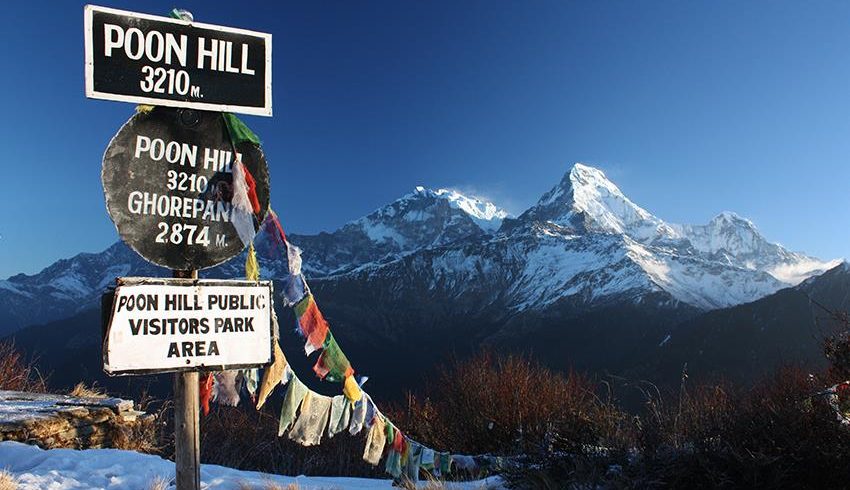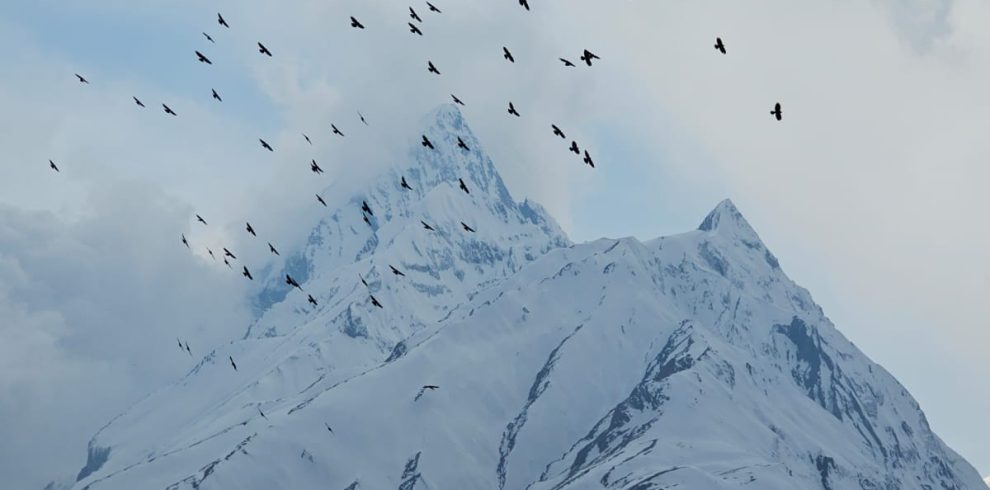Trekking to the forbidden kingdom of Nepal takes you to the ancient capital of Lopas (People of Lo or Mustang) Upper Mustang which nestles at the rainshadow of majestic Dhaulagiri
Trip Info
-
Annapurna
-
010m / 13156ft
-
Teahouse & Hotel
-
Car & Tourist Bus
-
B|L|D on Trek, |B| in KTM & PKHR
Overview
Mustang, a long-lost kingdom, implies the aura of mystery and seclusion. So, this hidden kingdom can be fascinating to those who crave for wilderness and exploration. Mustang has a long rich complex history that makes it one of the interesting places in Nepal. Despite the mysterious and legendary early history, the activities at Mustang have been recorded as early as the eighth century.
The inhabitants of Lomanthang- the capital of Mustang would boastfully call them Lopa which refers to the people of Lo. The religion practiced at Lo is Tibetan Buddhism of the Sakyapa sect. In Lo itself the countryside resembles the Tibetan plateaus with endless expanses of yellow and grey rolling hills eroded by wind. Villages are several hours apart and houses are constructed with fewer stones but with more sun-baked bricks and mud. Astonishing constructions of high city walls and a palace up to four stories are undoubtedly worthwhile watches in Lo. The trek to this forbidden kingdom begins at Kagbeni after two hours of walking from Jomsom.
Trip Highlights
- Unique Landscape: The rainshadow region of the Upper Mustang features a barren, desert-like terrain, deep gorges, caves, and towering cliffs.
- Tibetan Culture: Strong influence of the Tibetan culture over past several centuries have left a wealth of rich culture, traditions, and architecture to be discovered in the various villages along the trek.
- Fascinating Caves: Several caves (popular as 'Sky Caves') including the Chhoser (Jhong) Caves, a multi-storied man-made cave system, Chungsi, Ritseling, Niphu Caves, among others.
- Detailed exploration of the historic walled city of Lo Manthang, the capital of the 14th century forbidden kingdom of Lo including the eastern and western valleys.
- Ancient Monasteries: Historical monasteries including the Lo Gekar Monastery (Ghar Gompa), Jampa Monastery, and the Thubchen Monastery renowned for its impressive murals and frescoes, including a detour trip to the Luri and Yara Gompas.
- Off-the-beaten path: While a significant section of the Upper Mustang trail crisscross motorable road, this route also takes you to the remote sections that are away from the motorable road, offering a much secluded experience.
- Himalayan Views: The stunning views of the Himalayan ranges such as Annapurna, Dhaulagiri, Nilgiri, and Mustang Himal can be enjoyed along the trek.
Itinerary
A warm Nepalese welcome awaits as you exit the Arrival gates at the Tribhuvan International Airport. You are transferred to the hotel where you may rest. Later we have a short meeting to acquaint you with the scheduled programs for your trip.
After breakfast, we begin the sightseeing tour of the historic Kathmandu Valley. It includes 4 UNESCO World Heritage sites Pashupatinath, Baudhanath, Kathmandu Durbar Square, and Swayambhunath. These sites offer a quick yet profound experience of the diverse culture, rich art, and architecture, and the way of life of Nepal. You are dropped off at the hotel and we check for any missing gear and equipment for the trek.
After breakfast, we will drive straight to Pokhara City, which is 200 km west of Kathmandu. It is a 6-7 hour drive by tourist bus. This drive will take you through beautiful forests, deep gorges, and some local villages on the way to Pokhara. After reaching Pokhara, check-in at the hotel. If the weather is clear, you can see the reflection of Mt. Machhapuchhre in the lake. In the evening, boating in Fewa Lake and exploring the lakeside. Overnight at Pokhara.
We fly to Jomsom in the early morning hours. The 20-25 minutes flight offers a wonderful bird-eye view of the arid landscape of the valley below and the strikingly beautiful view of the Annapurna and Dhaulagiri ranges. Upon landing, we prepare our bags and instantly set out on the trekking journey north toward Kagbeni. Initially, the trial cross passes interweaving a series of suspension bridges over the Kali Gandaki River. Then we find ourselves walking a desert-like terrain with traditional Tibetan houses, and surrounded by stunning Dhaulagiri (8167m), Tukuche Peak (6920m), Nilgiri, and Annapurna Ranges. We arrive at Kagbeni about 3 hours later, welcomed by the view of Mt. Nilgiri to the south. Kagbeni is a trading village with some cultural essences still intact. The day’s trek ends at a teahouse in Kagbeni.
Today the trek begins with a steep climb through the array of gullies and small towers, crisscrossing to a viewpoint of Nilgiri over Kagbeni. The trail continues on the east bank of the Kali Gandaki River, through several ups and downs until you reach the village of Tangbe. The trail onward again climbs to the elevation of 3100 m before sliding down steeply along the east bank of Kali Gandaki for one and a half hours to the village of Chhuksang. Chele is seeable at a distance from Chhuksang. A short walk along the river bank will bring you to a firm bridge over the Kali Gandaki River. Cross passing the bridge we enter the tunnel which is burrowed under a vast block of red sandstone. Beyond the tunnel, the short steep climb will bring you to Chele 3050m.
Today once again the Upper Mustang trek begins with gaining elevation sharply. It leads to a plateau through a small trough. Taking a sharp corner, the sight of the village of Ghyakar appears to the west. To the south panorama of Nilgiri, Tilicho peak and Yakawa Kang is awe-inspiringly amazing. Beyond the plateau, a short descent leads you to Samar. Three hours walk to Samar might have exhausted you and hence you will take your lunch here. Post lunch at Samar the trail tumbles down sharply for about 70 m into a cavernous side ravine. A short steep climb takes you out of it and after a brief breather, it pushes again into another side ravine. A steeper climb later we arrive at Bhena La at 3860m. The trail curves alongside the cliff before arriving at another pass of Yamda La 3860m. We then climb down the valley to arrive at Syangboche (Shyanbochen).
We begin along a trail that climbs gently to reach atop the Syanboche La 3850m before plummeting and then gradually emerges out to a collection of houses, monastery, chorten and wide pastures at Gheling. The trek continues above Gheling onward as we make a long climb to the Nyi La pass 4010m. On the other side, a long steep descent, out of the wind, leads us to Ghami 3520m.
From the Gompa in Ghami, two trail branch off. We follow the one to the east of the village that steeply passes a trio of red, black, and white chortens. We follow the trail that climbs onto a gently slanted plateau and passes alongside a long mani wall about half an hour’s walk from Ghami. From the touchline of the wall, the trail heads away from the east to a very dramatic red eroded canyon wall soaring above the village of Dhakmar in the distance. From here we climb progressively to an elevation of 3770m. From this point, the descent to Tsarang is quite gentle and it can be completed in about 2 hours.
The trail continues northwest toward the capital of the Forbidden Kingdom of Lo – Lomanthang. As we leave the village behind the trail plummets steeply into the Tsarang Chu gorge. Then crossing the river beyond the gorge the route climbs along the steep hill at Sungda Chorten. A sharp bend appears and we head north with a great view of the majestic white Himalayan peaks of Nilgiri, Tilicho, and Annapurna I sprawling before us. We can enjoy some spectacular caves high up in the cliffs to the east. We arrive at a Lo La pass at 3950 m. The view ahead extends out to display the western valley of Lo-Manthang. The bright bicolor monastery of Namgyal in the distance is observable with the wide valley surrounding it. Just down from the pass are the first theatrical view of the walled city of Lo-Manthang and the ancient ruins of the forts on the hills behind it. The descent to Lo Manthang is short and after crossing the small river and climbing briefly the fabled city is finally reached.
You can visit the monasteries within this once prosperous city with a sophisticated culture. Wonder around the Tall Jampa Lakhang, red Thubchen Gompa, Chode Gompa, or the most popular Raja’s palace. The external walls and the courtyards at these places are so magnificent you would adore them at first sight. Kindly note that photography inside most of the important sites at Lomanthang is strictly prohibited.
The valley east of Lomanthang includes Chosar with interesting sky caves. The Garphu and Nyphu gompas are also worth exploration that are located along this historic trade route to Lhasa. The ruined downfalls of countless forts along the trail provide a peek into the history of this site. We return back to our lodge in Lomanthang after a relaxed exploration of the important sites.
The highlights in the western valleys are Namgyal Gompa and Thingkar (Thinggar) village. This is about a 4 – 5 hours, round trip hike. It takes about 2 hours to reach Namgyal Gompa which is situated on a hilltop. It serves as an important monastery of the local community and as the local court. After visiting Namgyal Gompa the exploration trip continues to Tingkar, a village of around 400 houses. It is the last main village to the northwest of Lo Manthang.
From Lo Manthang, we continue along the high eastern trail to cross the Dhi pass (4000m) and descend to the green oasis village of Dhi. Amazing canyons and colorful cliffs can be witnessed along this trail with continues further across the river to arrive at Surkhang. Overnight at Surkhang.
Today we advent on an exploration hike to the oldest monasteries of the region- Lori and Yara Gompas. Luri Gompa dates back to at least the 14th century. Resting atop a 100-meter-high cliff, the old mudbrick monastery can be accessed by a winding path that climbs onto a lower cave that eventually leads to the monastery. Impressive murals and painted ceilings adorn the inner chamber of this cave monastery.
The Yara Gompa also founded around the 14th century is considered one of the oldest monasteries in the Upper Mustang region. The architecture of Yara Gompa is also quite impressive which includes a complex network of caves that were carved into the surrounding cliffs. It houses a collection of ancient Buddhist manuscripts and artifacts, many of which date back several centuries. A round trip to Luri Gumba via Yara and Ghara, and a return to Surkhang is one of the major highlights of the Upper Mustang Trek with Access Nepal.
From Surkhang, you cross the Ghechang River, which starts from the revered lake of Damodar Kunda. After crossing the river, the trail ascends to a pass at 3850m and continues through the grasslands, eventually bringing you to walk along the naked hills. Beyond the pass, the trail nose-dives down to the village of Tange 3240m. Tange is a tiny village with around 30 houses. Most of the houses are attached.
Today the trail continues through deep ridges and provides astounding views of wind-imprinted hills on both sides and brings you to a small village amidst a similar landscape. Tetang Village nestles between two of these hills to shield it from the strong wind that hit the entire Kali Gandaki valley. Tetang is the higher-altitude village of Chhuksang.
This is the last day of the Upper Mustang Trek or the trek to the Forbidden Kingdom in Nepal. The trail climbs unrelentingly to Gyu La at 4077m at about the middle and gradually drops all the way to Muktinath. We may explore the sacred temple complex of Muktinath in the afternoon if we can spare the time. The Kali Gandaki Valley and Kagbeni village look beautiful from here. We then take a jeep to Jomsom in the late afternoon. Relax with some apple pies and overnight at Jomsom.
The flight from Jomsom to Pokhara is just about 20-25 minutes. You are transferred to the hotel upon reaching Pokhara. The remainder of the day may be spent with downtime in Pokhara or exploration of the sights and sounds around this beautiful city.
We drive back to Kathmandu today along the Prithvi Highway lasting about 7 hours. In the evening you are invited to a farewell dinner at a fine restaurant in Thamel.
The trip has come to an end. You may indulge in some shopping for souvenirs until your departure transfer to the airport. As per your flight schedule, our representative escorts you to the airport in a private vehicle. Hope to see you again.
Cost
Cost Includes
- irport pick-up and drop
- 3 nights accommodation in Kathmandu . (Breakfast Included)
- 2 nights accommodation in Hotel Batika, Pokhara or Similar - 3 Star (Breakfast Included)
- Kathmandu - Pokhara - Kathmandu transfer on a Deluxe Tourist Bus
- Pokhara - Jomsom - Pokhara flight with airport transfers
- 13 nights accommodation in Local Tea Houses during the trek (Breakfast, Lunch and Dinner Included)
- Accompany of Licensed English-speaking trekking guide for the entire trip (Trained in First-Aid and Emergency Evacuation)
- One porter for every two clients (13 Kg luggage per person) - salary, insurance and personal expenses covered
- A cup of tea/coffee (three times a day) and seasonal fruits after dinner on the trek
- Attached bathrooms and hot showers wherever available
- Muktinath to Jomsom drive on a shard jeep (Day 16)
- Trekking permit, Mustang restricted area perit, and Annapurna Conservation Area Permit for the trek
- First-Aid box with medicines (Carried and handled by the guide)
- Private AC vehicle during the sightseeing tour
- Accompany of Licensed, English-speaking, well experienced city tour guide with salary and personal expenses covered during the sightseeing tour
- All applicable government charges
Cost Excludes
- Nepal Visa and International airfare
- Travel Insurance (Compulsory) - must cover helicopter evacuation, medical expenses, and Trip Cancellation charges
- Meals in Kathmandu except for breakfast and farewell dinner
- Personal equipment and other personal expenses such as beverages, confectionaries, laundries, etc.
- Monument Entrance fees during the sightseeing tour
- Extra meals, extra porterage service, Wi-Fi, charging of your electronic devices, etc.
- Tips to your guide, porters, driver and other field staff as a token of appreciation
- Any other expenses or charges not mentioned in the 'Trip Includes' list
FAQs
- Cultural Immersion: The Mustang region is rich in Tibetan culture, with ancient monasteries, traditional villages, and local customs that offer a unique cultural experience. Magical Nepal Treks ensures that you have the opportunity to interact with local communities and understand their way of life.
- Stunning Landscapes: The Mustang trek offers a diverse range of landscapes, from arid deserts to deep gorges and stunning views of the Himalayas. The trek provides an exceptional opportunity to witness the natural beauty of the Mustang region, with its unique terrain and vibrant colors.
- Historic Significance: Mustang, often referred to as the “Last Forbidden Kingdom,” has a rich history and preserved heritage. Magical Nepal Treks provides knowledgeable guides who offer insights into the historical and cultural significance of the area, making your trek informative and enriching.
- Comfort and Safety: With Magical Nepal Treks, you can expect well-organized trips that prioritize your comfort and safety. Their experienced guides and porters ensure that your journey is smooth, and they are well-equipped to handle any emergencies that may arise.
- Tailored Itineraries: Magical Nepal Treks offers customizable itineraries to suit your preferences and fitness levels. Whether you are looking for a challenging trek or a more relaxed journey, they can tailor the experience to meet your needs.
- Sustainable Tourism: Magical Nepal Treks is committed to promoting sustainable and responsible tourism. By choosing them, you support eco-friendly practices and contribute to the preservation of the Mustang region’s natural and cultural heritage.
- Local Expertise: The team at Magical Nepal Treks comprises local experts who have extensive knowledge of the Mustang region. Their insights and expertise enhance your trekking experience, providing you with a deeper understanding of the area’s unique features.
- Unique Experience: The Mustang trek is less crowded compared to other trekking routes in Nepal, offering a serene and peaceful trekking experience. Magical Nepal Treks ensures that you get to explore the hidden gems of Mustang, away from the usual tourist trails.
By choosing Magical Nepal Treks for your Mustang trek, you ensure a well-rounded, safe, and enriching adventure that combines natural beauty, cultural immersion, and historical exploration.
If you are physically fit and guided by a sense of adventure, you would love trekking! The mountains and hills of Nepal have trails that match all abilities. The remotest trails that are mostly unexplored to well-marked trails with ample facilities, Nepal has
The prime challenges trekkers face in the trekking regions are language barrier and navigation. A major section of the trekking regions are uninhabited and in the remaining sections that are, the locals hardly understand English or other foreign languages. Weather conditions and other unanticipated challenges can make it difficult to plan the day’s trek, meals and shelter options. A wrong turn could push you off the trail into harm’s way.
A guide on the other hand, eases things for you, enriches your experience and ensures safety. Guidance that comes from experience and deep local knowledge lets you to enjoy and make the most out of your trip while you leave the arrangements and planning to your guide who becomes an important part of your team.
Trekking in the Himalayas can be moderately challenging to difficult based on the terrain, number of trekking days, time of the year and current weather conditions. It also depends on previous trekking experience and skill of the trekker.
It is preferable, but not necessary. However, physical fitness and the ability to cope with strenuous conditions in high altitudes is necessary to make the experience a pleasant one. It is therefore recommended that you begin physical training, involving cardiovascular workout and stamina enhancement months ahead of the trek.
Although the destinations in lower altitude can be trekked throughout the year, Spring (February to May) and Autumn (October to December) are the best times to trek in high altitude. Nepal receives monsoon rain from June through September, which is not a great time to trek. However, the rain shadow areas of Upper Mustang, Dolpo and Nar-Phu offer a great escape during the season. Winter is very cold in the upper mountains with heavy snowfall which cause obstructions in the trekking routes.
A Trekkers’ Information Management System (TIMS) card is necessary for most trekking regions. An entrance permit is required for protected areas such as the Annapurna Conservation Area, Sagarmatha National Park and others. Upon confirmation of your booking, we acquire all necessary permits on your behalf.
All treks with an exception of a camping trek include accommodation in a mountain lodge or guest house for overnight stays and meals.
The nationwide expansion of mobile network has made it possible to enjoy 4G and 3G network in most parts of the trek up to moderate altitude. A simcard for NCell and NTC, the leading mobile telecommunications providers can easily be availed. Uninterrupted connection however is greatly affected by weather conditions and terrain. More high altitude remote areas like the Everest base camp require satellite phones.
It is a known fact that oxygen levels at higher altitudes are significantly lower than the level that we are used to and the body needs to adjust to this change in atmosphere. The best way to aid acclimation is to climb slowly. We have prepared our itinerary to allow enough time for acclimation and not put too much of strain on the body. Adequate acclimation days, a combination of rest and a short hike have been arranged to further support the process. Minor symptoms of altitude sickness include severe, persistent headache, coughing, pressure in the chest, shortness of breath even while at rest, dizziness, tiredness, loss of appetite and others. It is vital you constantly monitor your health condition and report any signs of sickness to your team leader.
If you fall sick or get injured despite precautions, our first-aid trained guides would be your first help. Depending upon the nature of sickness or injury, you would either be immediately taken to a lower altitude (in case of altitude sickness) or evacuated by a rescue helicopter for medical attention. We would require your insurance details to arrange for a rescue helicopter if you are injured in a remote area and in no condition to trek further.
Safety of all our guests is our utmost priority. Nepal has been well-known as a safe destination and the Nepalese as friendly and welcoming people. We generally trek in small groups in constant care and company of our experienced and expert guides. The places that we frequently utilize as our stops have been known to be reliable and safe over the years that we have been served. As such the safety of all travelers is ensured.

